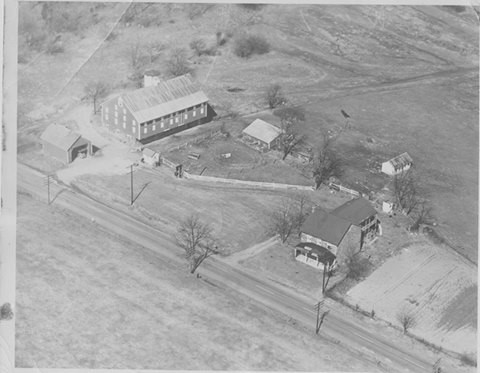By Ray Davis
Friday June 26, 1863 was John Calvin Lady’s fifth birthday. The fourth child out of seven for Daniel and Rebecca Lady, John Calvin would have a birthday the family would not soon forget.
The citizens of Adams County had been hearing of the approaching Confederates since early to mid June. Reports from surrounding counties had Confederate numbers ranging from a few companies of soldiers upwards to 40,000. Many could not have imagined what was soon to come. The hard hand of war was about to reach Gettysburg and the Lady farm.
On the afternoon of the 26th, the Confederates arrived from the west. The 35th Battalion of Virginia Cavalry, or White’s Comanches, was in the lead, followed by Gordon’s Brigade of Gen. Jubal Early’s division. Their destination was York, roughly 30 miles to East, and the Susquehanna River beyond.

While in Gettysburg, they foraged the town and surrounding farms. They entered the shops, offering to purchase goods. They approached the farmers and bought their stores. The Confederates took a number of horses as well. Lee’s army was supplying itself off of the Pennsylvania countryside.
It was on this Friday that Daniel Lady “sold” 166 bushels of corn to White’s Comanches. A receipt was found signed by Daniel Lady and Capt. John J White, Assistant Quarter Master of the 35th Battalion Virginia Cavalry. The Confederates paid $1 per bushel for a grand total of $166. The markets at Gettysburg and Baltimore were only paying around 85 cents per bushel at the time. So he might have made out, but like so many, Daniel Lady was paid in Confederate money which had no real value. 1
The Confederates moved on and the days that followed were full of rumors and the on and off sighting of Federal cavalry and the occasional Confederate soldier. On Sunday, June 28, the Michigan Cavalry Brigade under the command of the newly-promoted Brig. Gen. George Armstrong Custer came into Gettysburg. They too went foraging for supplies.
Thanks to a research request through the National Archives, evidence was discovered of Daniel Lady selling a horse to the 5th Michigan Cavalry just two days after the Confederates were there buying corn. Although the record is incomplete, what remains gives us a good idea of what happened.
First Lt. William O. North gave Daniel Lady a receipt for a horse valued at $150. Daniel Lady petitioned the government for payment of this receipt in June of 1865. The matter wasn’t resolved until March of 1866, due in part to the fact that Lt. North was killed at the Third Battle of Winchester in September of 1864. The federal government had to validate North’s signature on the receipt. Once they did, Daniel Lady was awarded his money, almost three years after the fact. 2
On Wednesday, July 1, the battle brought portions of both armies to the Lady Farm, with Johnson’s Confederate division spending the night and preparing to attack nearby Culp’s hill the following day. On Thursday, Daniel Lady, with his family, is forced to flee his home. He returned on Saturday, July 4 to find his house and barn in ruins. His damage claim states that “his buildings were used for hospital purposes, …wounded soldiers were in the house and dead bodies lying around which they were obliged to bury.”
Their neighbor testified that their loss was “almost entire. “ One can only wonder how they explained this situation to their children. 3
So, on Friday Daniel Lady loses 166 bushels of corn to the Confederates. Two days later he sells a horse to the Union Army. Three days after that the battle reached his farm. The next day, July 2, Daniel and his family fled and he didn’t return until Saturday July 4 to find his house and farm in shambles.
In a little over a week; a week which started with him looking forward to his son’s birthday, Daniel Lady would see his crops, animals, and almost everything he owned either bought, stolen, or destroyed. The worst fears that the locals had all summer long had come true for Daniel Lady and many of his neighbors. It was a long week indeed.
Daniel Lady and his family persevered through this adversity and continued to live on their farm until 1867, evening having another child in January 1865.
Not long afterward, the family moved to the nearby Arendtsville area where Daniel Lady would live out his days as one of the county’s most respected citizens.
With your support of the Gettysburg Battlefield Preservation Association we can continue to tell the story of this remarkable family, their farm, and how it relates to the Battle of Gettysburg. Through your donations and volunteering we continue to preserve the Lady Farm and the family’s legacy. Thank you for helping make a difference.
Notes:
1. www.fold3.com/image/#43263312 Records Division War Department Rebel Archives found on fold3.com
2. Files from the National Archives Office of the Quartermaster General Claims File Miscellaneous Claims Box No. 25 Book 63 Claim # 1457
3. Damage Claim of Daniel Lady Microfilm Files Adams County Historical Society Claim # 3270
